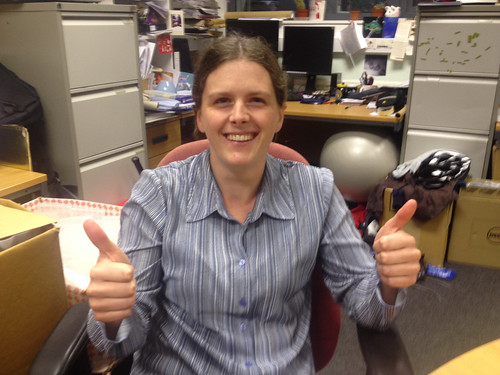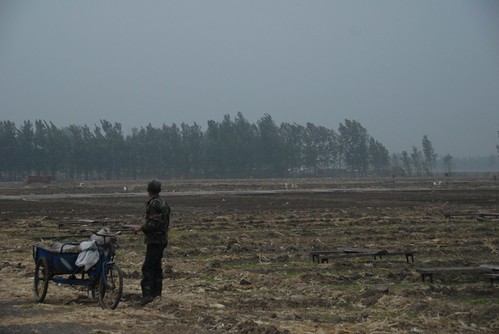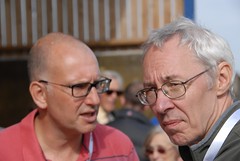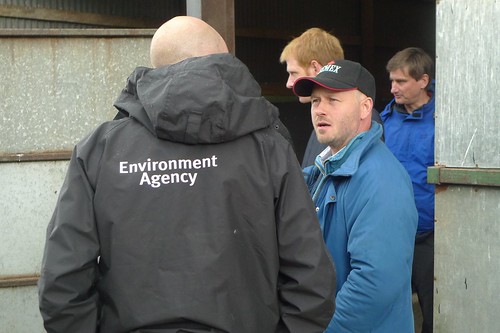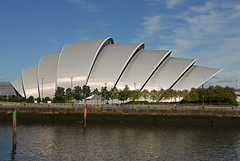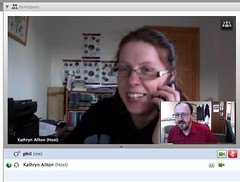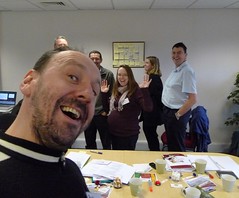Congratulations Dr Tegan Darch who today defended her PhD on soil phosphorus. Another PhD student success! Well done Tegan, Happy Days!
Wednesday, 6 November 2013
Thursday, 24 October 2013
Congratulations Dr Roberts!
Congratulations to my PhD student Will who successfully defended his thesis on phosphorus bio-geochemistry today! Well done Will!
Friday, 18 October 2013
On wheat-maize rotations and nutrient flows in Huantai County, Shandong Province, 14th-16th October 2013
A few key learning outcomes for me were:
•The nitrate levels in the groundwater seemed to be approximately 3x the UK standard
•The water flows in this region are almost all to groundwater, so there is a sense of ‘out of sight, out of mind’.
•There was little real regard or concern for water quality
•According to the Agricultural Bureau, the water quality monitoring is the ‘job for the provisional government’ and that the information is ‘classified’. The bureau did not seem to be aware of any county level programme for protecting water resources.
•Generally there seems to be a nitrogen centric view here, phosphorus was little mentioned although it is used with N and K (in a bagged fertilizer NPK 15-15-15)
My photos from the trip to Huantai can be viewed here.
Phil
Monday, 14 October 2013
On Rice and Wheat rotations, nutrient management, and Lake Taihu in Jiangsu Province….
In summary:
•There are no data on flows to water and there seems to be a lack of emphasis on this
•The systems appear to be constrained and driven by agronomic production with only an emerging regard for losses to the environment
•It reminds me of my own work in the UK in the early 1990s, with systems driven by soil P tests and fertilizer levels, occasional concentration in water. The next step is that they need to learn to determine the nature of the losses to the water, including the hydrological flows and dynamics, not just the concentrations in water.
•A great ‘problem’ for these systems is the density of the population; therefore one cannot manage the water quality without a sense of the agriculture combined with the human inputs. There are governance and communication challenges here
•The work at Sandongqiao is promising and I see analogies with other studies in the past.
My photos from this trip can be viewed here.
Phil
Tuesday, 1 October 2013
Caption competition!
e.g 1:
I think we were deciding to move Haygarth to play wide on the left, with Allton as the lone striker.
e,g. 2:
Ed (thought bubble) ‘I wish he’d stop going on about soil erosion’
Any suggestions welcome.....
Soil Scientists footloose in the north Pennines!
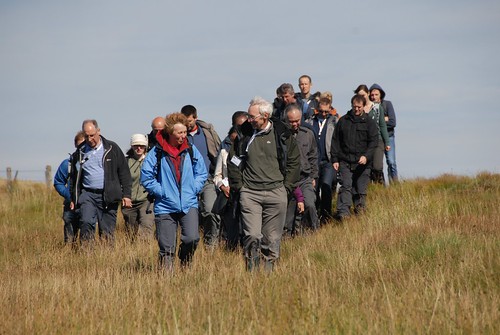
Recently working with my colleagues in the British Society of Soil Science, we hosted the annual conference based at Lancaster but had a field trip in the Eden Valley and on Hartside. The weather was terrific. Thanks to all the team for a great effort - here are the photos that I took on the day
Friday, 12 July 2013
Checking out the Venue for the World Congress of Soil Science 2022
Monday, 1 July 2013
Farmers, Defra and the Agency learning together
I have just been part of a most inspiring gathering.......With my partners from EdenDTC, Eden Rivers Trust and Newton Rigg College, we brought together national Defra staff with farmers in the Eden to talk about solutions for future farming and water quality. After visiting a number of farms, we came together for drinks and dinner in the Mil Yard Cafe, Morland. The spirit of the day was terrific and I think provides some useful inspiration for making a difference. It was particularly exciting to see the farmers - the local land experts - gaining confidence from the dialogue so that they might be empowered to lead the way on new innovations and solutions. Farmer power!
Thursday, 9 May 2013
Recruiting two soil and water phosphorus scientists
Soil/Water Catchment Biogeochemist
Soil/Water Catchment Modeller
The closing date for both applications is 24th May (not long!) and interviews will be held on the 13th June. Please contact me if you wish to know more details or apply through the web site.
Monday, 15 April 2013
Friday, 12 April 2013
Mount Etna Fireworks Live: LEC students chose to work rather than eat pizza.....
Mike's email said:
"LEC's 2013 Volcanic Processes Field Course to Sicily has been treated to some of Mt. Etna's best firework displays. On Wednesday the group of 20 undergraduate and postgraduate students, along with three visiting students from across Europe saw small ash plumes from Etna's active vent. However, this was only the prelude to a sustained fire fountaining event that started on Thursday evening and is continuing now (06:30, Friday morning). The fireworks have been accompanied by explosions that have been large enough to rattle windows where we stay in Nicolosi, 10 km from the volcano. In an unusual move on Thursday evening, students voted to do work (volcano observations) rather than be taken out to eat free pizza!"
The photos below were taken by LEC's Dr Mike James and Dr Steve Lane.
Nice one folks!



Wednesday, 10 April 2013
Tuesday, 12 March 2013
Get behind Glasgow!
Get behind Glasgow!
Why and how the British Society of Soil Science can win the case for hosting the World Congress of Soil Science in Glasgow, Scotland
Why soils?
Soils underpin our basis for life and civilization on earth. Soils provide the food we eat and purify the pollutants that circulate around the planet. In short, soils provide the basis for the sustainable future of planet earth.
A great opportunity….
We are bidding to host the World Congress of Soil Science (ICSS) in Glasgow in 2022 and this is a great opportunity for us all; and we have never been in a better position to go for this. We can expect to bring over 2000 participants to our shores.
Why the British Society of Soil Science?
The BSSS already has close to 800 members and about a quarter of those are international members. In June 2014 we will present our case to the International Union of Soil Science in Korea – the analogy is rather like a soils version of bidding to host the Olympics. In order to prepare this bid we have formed a committee tasked with preparing the first case.
What are we doing?
At the moment we are going through a series of consultations in our BSSS meetings, through our publication ‘The Auger’ and our website (www.soils.org.uk), to collect inputs and ideas about what our members and wider national stakeholders would like to see in the proposal. This first ‘consultation phase’ will conclude at the AGM of the Society in the Autumn, after which we will merge into new phase of bid preparation, to be presented in Korea in June 2014. After we win the bid we will enter the next phase….delivery….
Some imperatives….
•The congress has not been held in the UK since 1936 in Oxford
•The diverse nature of UK landscape presents multiple challenges to soil science both in application and practice
•The UK has a world leading soils research community and long established research stations that
•Easily accessible location
•Strong global soil science presence and links
Get behind Glasgow
We are asking for your views and registration of support for the ‘Get Behind Glasgow’ campaign. We are preparing a website for the Congress and would like you to post the ‘Get Behind Glasgow to Host the 2022 World Congress of Soil Science’#Glasgow2022WCSS on your blogs, email footers and websites and create the hashtag ”#Glasgow2022WCSS on your twitter sites.
•What would you like to see in Glasgow 2022, what is our universal selling point?
•What would you like the conference look like?
•What are the exciting things about Scotland and Britain that you would like to see us making the most of, from both a soil but also a tourist point of view?
Follow developments on Phil Haygarth’s blog (http://landwaterblog.blogspot.co.uk) or Tweet @ProfPHaygarth #Glasgow2022WCSS.
BSSS Glasgow 2022 Committee (Phil Haygarth, Katherine Alton, Helaina Black, Bruce Lascelles, Jason Owen, Willie Towers)
Sunday, 24 February 2013
President's Blog: A Gathering in Aberdeen.....
As part of my BSSS Presidential work, I spent last Tuesday night and Wednesday in Aberdeen. On Tuesday evening I met and chatted with IPSS Chair Jason and then on Wednesday, with a full day I met Liz Baggs, the new President Elect at the University, and afterwards, with Helaina, Kathryn and Willie, we met and chatted about soils education plans as well as thinking ahead to the Glasgow 2022 bid. here are some of the merry gathering just before I dashed off for the train home.....
Friday, 1 February 2013
A day in the life.....
Just finished a webex video meeting with Kathryn at BSSS HQ..... Planning planning and more planning (and some planning).
Have a good weekend folks......
Tuesday, 29 January 2013
BSSS Council induction meeting......
Yesterday I joined Kathryn Alton and a bunch of colleagues from the British Society of Soil Science's new Council Committee for an induction session, at Cranfield University. As well as being incredibly helpful, it was a great team building exercise. I think that you will agree from the photos that it is going to be a fun couple of years......
The National DTC Conference
My job was to observe the big array of presentations of day one and to give a sum up address. I noted and suggested that the journey so far can be summed up in three phases as:
NEW TERRITORY
The teams of the Eden, the Wensum and the Hampshire Avon along with Defra and the wider family of projects and players, have all done a great job setting up the platforms and starting the new way of feeding the evidence base. This is tough stuff, it is not replicable pot or plot experiments, this is catchment science and it involves people, their land and their livelihoods. Setting up such a study in its own right is difficult going - and all involved should be proud of where they have got to.
IRRECONCILABLES.....
Some things do not add up, they are not perfect and are uncomfortable. But that's ok, it is not a perfect world, instead there exits much complexity and hence uncertainty. Different catchments respond at different speeds and at different rates of hysteresis. There was perhaps an over emphasis (I feel) on delivery mitigation and not so much on source and mobilisation control - take note readers and think about this. Delivery modification is simply closing the stable door. We need to be stopping the inputs and the initial detachment and solubilisation of the pollutants.
BUILDING TRUST AND COMING TOGETHER
It takes time to build trust and on the time scale of partnership building the ship of trust is just leaving the harbor and heading towards open waters (sorry for over stretching the ship analogy there!). We raised issues 'what farmers and, what science?' and it was pointed out that 98% of CSF farmers thought that their farms were contributing 'little if not at all' to diffuse pollution. Clearly there is work to be done. New ways of managing data and knowledge through the data archiving and the hub were suggested and a new tool kit proposed.
The next phase will need lots of patience, lots of careful eyes on the detail of the science and lots of KT.
Step by step.
Tuesday, 22 January 2013
Starting the Presidency of the British Society of Soil Science....
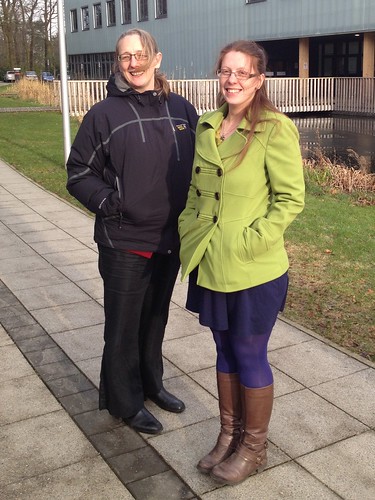
Helaina and Kathryn survey the campus whilst planning for the 2013 meeting, a photo by Soil & Water Science on Flickr.
Presidents blog number 1 – Here we go…..
As the 1 January passed reality dawned: No longer could I hide behind the mighty Heliana any more, no longer was I president elect, it was my turn to carry the can. What better way to kick off the New Year and my new term than a two-day meeting with Vice Pres Heliana, Exec Officer Kathryn and Hon Treasurer Adam …. Taking advantage of the fact that Adam, Heliana and I live within a few miles of one another, we used Lancaster and the Lune Valley as our place to meet. On Wednesday I picked up Kathryn on the 1209 into Lancaster and we spent the first afternoon at my house in Docker, dided by Helaina’s shortbread and my tea. Day two we met at Lancaster University and were joined by Adam and Ed Tipping (who is helping on the Committee of the Annual Meeting coming up in September) (a few photos of our meeting can be viewed here). There was no formal agenda, but the two days were a terrific means for some strategic planning for the months ahead.
One of the key things that I want to highlight to all members is our planning for the bid to host the IUSS World Congress of Soil Science Meeting in Glasgow in 2022. As a society this is a great opportunity for us to welcome the world to our shores and put on a great soils jamboree. At the World Congress next year we will need to raise a competitive bid to the council and this is no easy task. Over the coming months I want to start a process of consultation and welcome BSSS members to a Glasgow 2022 Committee. We shall start with an open discussion at the Early Career Conference in York in March, followed by a similar around the AGM in September. If you feel you can help with planning the case, developing the unique selling product, thinking about the Glasgow science, the Glasgow legacy, then please do get I touch with me and Kathryn and we will gratefully welcome you to the fold. Onward…
Phil, Docker Garth, January 20th 2013
